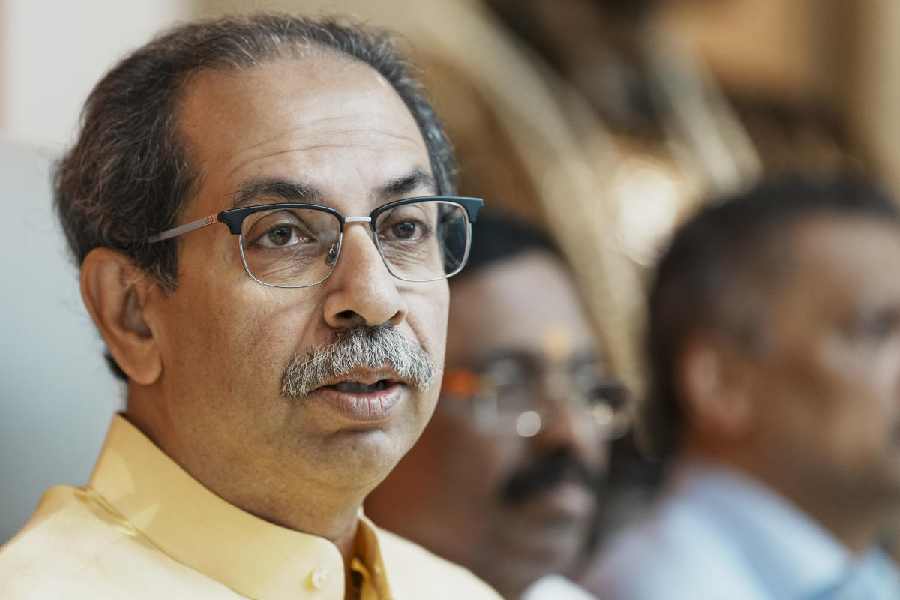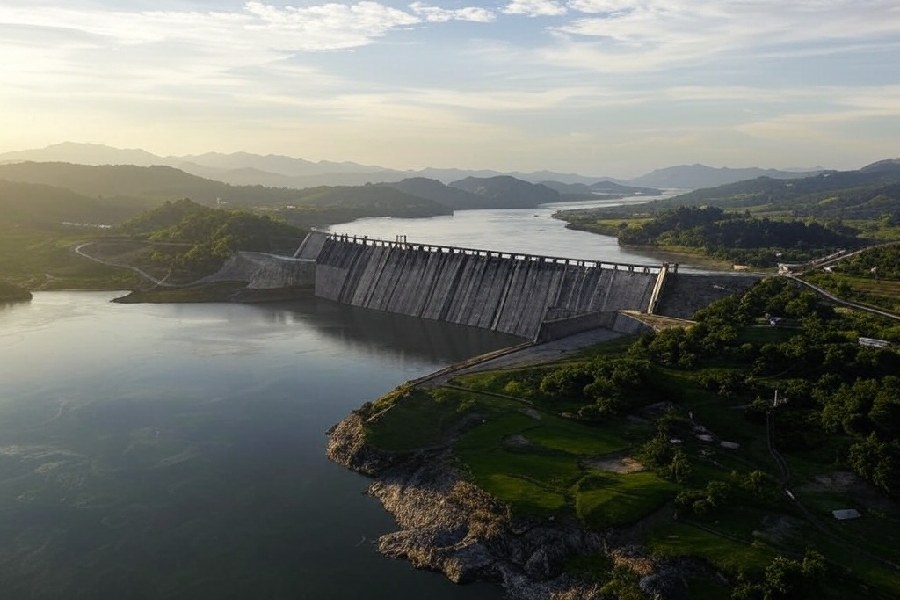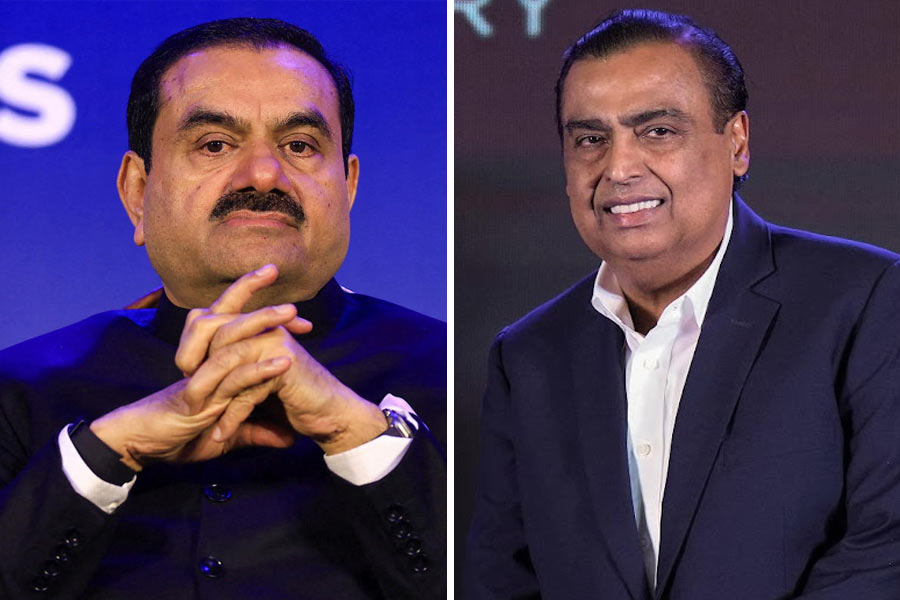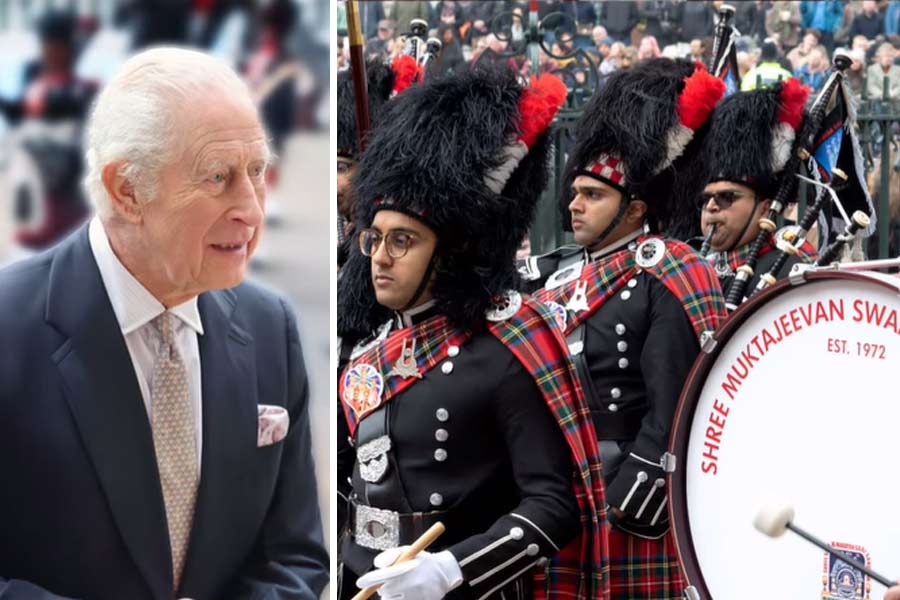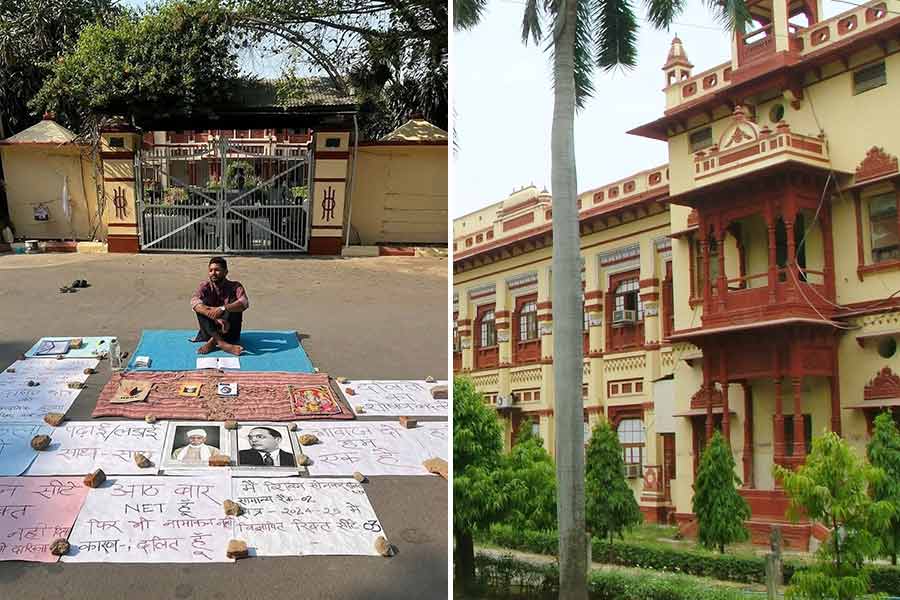A.jpg)
Science City has raised a toast to India’s contribution to science. On the first floor of the newly built Science Exploration Hall is a gallery on the Science and Technology Heritage of India. The Telegraph Salt Lake took a pick of 11 contributions that the ancient Indians have made to the field of science from among the exhibits.
.jpg)
1 Medicine
In his book Sushruta Samhita, the ancient physician Susrata describes 1,120 illnesses in nearly 200 chapters, along with their treatments.
The book details surgical techniques for incisions, extraction of foreign objects, prostrate gland removal, hernia surgery, Cesarean-section, fractures, cataract operation and even rhinoplasty and plastic surgery.
A wheel, representing the second century text Caraka Samhita, by physician Caraka, has been created at the hall and has samples of ayurvedic ingredients like chirata, ritha, tulsi, brahmi and shikakai.
Unani medicine came to India with the Delhi sultanate in the 12th or 13th century. This is a Graeco-Arabic stream, originating from the teachings of Greek physician Hippocrates. The Mughals patronised it and with their help the stream developed, even drawing from ayurveda and Chinese medicines.
.jpg)
2 Chemistry
Early research in the subject spawned out of two age-old desires: immortality and wealth. So the early scientists were mixing minerals to see if they reacted to create the elixer of life and if base metals turned to gold.
Rasashala, as the chemistry laboratories were called, can be traced back to the 13th century and though neither immortality nor gold could be created, they learnt a great deal about metallurgy. Texts like the Rasaratna Samuchchaya detail the nature, properties and reaction of metals such as gold, silver, copper, zinc, mercury etc.
.jpg)
3 Architecture
Not just the Taj Mahal, India has masterpieces even in cave architecture and rock-cuttings.
The Buddhist era led to an advent of temples and monuments such as the Sanchi Stupa and the Ajanta caves. The south Indian school of architecture led to distinct temples like those in Mahabalipuram and Kanchipuram and in the north the nagara style gave rise to temples of Khajuraho.
Under Muslim rulers, Indo-Islamic styles thrived with works like the Red Fort, Humayun’s Tomb, Qutub Minar and of course the Taj Mahal.
.jpg)
.jpg)
4 Warfare
After Akbar’s soldiers would be done with shooting cannonballs for the day, the canons would be cleaned using a mechanised canon-wash.
Yarghu, as it was called, was a circular iron-and-steel set-up invented by Fathullah Shiraji.
The wheel above the device would first be pulled down using a pulley. The canons would be slid in through shafts and sent up with the pulley. An ox would then be made to turn a central leg fixed to the axel below and the wheel above would rotate. Iron bristles would rub off the carbon residue in the weapons.
This machine could clean 16 canons at once and faster than the strongest soldiers in the army.
.jpg)
5 Carvings
Wood carvings have always been used to make bedstead, door panels, temple and thrones by using rosewood, sal, teak etc. Buddhist relics in Sanchi too have wood carvings.
Silver filigree ornaments were a favourite of foreign traders, especially the “tarakasi” ones from Odisha. This method requires silver to be drawn into wire and joined to make designs.
Marble inlays flourished under Mughal patronage and was used to decorate their tombs and buildings while glazed tiles and mosaics were used for external embellishment.
.jpg)
6 Ship-building
The world’s first tidal dock for berthing and servicing ships was at the city of Lothal during the Harappan Valley Civilisation.
Located in modern-day Gujarat, engineers of Lothal made seaworthy ships that sailed to Mesopotamia and the middle east for trade. The dock was also connected to the Sabarmati river and was large enough to let at least two ships pass at a time.
.jpg)
7 Water management
Kautilya and the mathematician-astronomer Varahamihira would study rainfall and ground water table. Kautilya’s book Arthashastra even divides the subcontinent into zones as per their annual precipitation.
Even before them, concepts like artesian wells were mentioned in The Ramayana and The Mahabharata with Rama and Arjuna shooting arrows into the ground for water to come jetting out.
Ancient Indians managed to harness water too. In the Himalayan region, people used water mills to mill grain and hull rice. This they have been doing since the seventh century. In Himachal Pradesh, this water mill is called gharat (in picture below left).
.jpg)
(1).jpg)
8 Mathematics
If five apples cost Rs 50, how much will 10 apples cost? It is the ancient Indians’ formula for ratio-proportion that helps us solve such sums mentally today.
Besides well-known contributions such as the “zero” and the decimal system, Indian scholars had arrived at the Pythagorean theorem well before the Greeks as written in the Sulba Sutra. (A boy in the picture above checks out a demonstration of this theorem).
Aryabhatt, born in the fifth century, calculated the value of pi, devised a rule for square roots, advanced research in algebra, calculus, trigonometry. Pingala had developed the Pascal’s triangle well before the French mathematician Pascal did.
Even artists and sculptures of yesteryear would study geometry thoroughly before working, to ensure that that their works were proportionate.
.jpg)
9 Astronomy
Ancient Indians were fascinated by the stars and constellations and developed the nakshatra or lunar mansion. Using this they made calendars. (The picture above right shows the zodiac signs made as per the calender.)
Astronomer Brahmagupta’s contributions are acknowledged at the exhibit and Rajput king Jai Singh’s keen interest in mathematics and astronomy explained. It was during his rule that five observatories, known as Jantar Mantars, were built to predict eclipses and other astronomical events.
The hall also has a model of the Misra Yantra that is part of Delhi’s Jantar Mantar observarory.
.jpg)
.jpg)
10 Environmental science
A touch screen at the hall (in picture right) informs that for the Bishnoi community of the Thar desert, wildlife conservation has always been religion. They even have a proverb saying that if one has to lose his head to save a tree, the bargain is inexpensive.
The Jains practise ahimsa against plants and animals and the Nag Panchami worship of snakes is performed as snakes eat rodents and protect crops.
The first veterinarians in India were priests who looked after cattle. The surgeon Palakapya wrote on treating elephants and Salihotra, considered the father of veterinary science in India wrote on treating horses. Gavayurveda is an ancient text on the treatment of cows.
Emperor Asoka opened the first vet hospital in 238 BC. He also gave up royal hunts, introduced punishments for killing animals and planted trees along highways to provide shade to travellers.
11Geography
Ancient scholars held that the world had seven continents, called dvip and the Indian subcontinent was called Jambudvip.
Early scholars also tried to decode natural calamities. Some tried to correlate earthquakes with ocean currents, eclipses, the tilt of the planet… Varahamihira, in his 1,500-year-old text Bhukampamandala, explains the various seismic zones and they tally with the beliefs held today.
Scholars also studied volcanos, tsunamis, atmospheric turbulence and cosmic/meteoric phenomenon.

A.jpg)
